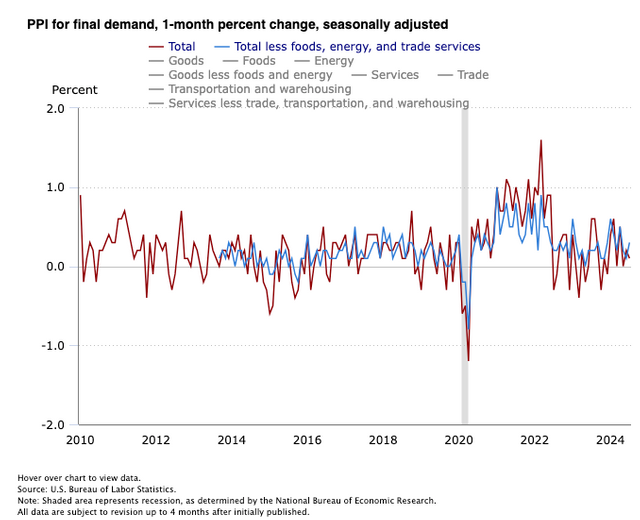As we progress through August 2024, the global economic landscape is heavily influenced by several critical developments, including the Producer Price Index (PPI) and Consumer Price Index (CPI) releases, the Federal Open Market Committee (FOMC) minutes, and the Jackson Hole Economic Symposium.
These events not only shape inflationary expectations but also provide critical insights into the Federal Reserve's monetary policy. However, as many investors with keen insights have noticed, a troubling trend is emerging: the selective broadcasting and interpretation of these economic indicators by Western media, reflecting a deeper issue of biased narratives that often overlook broader global impacts.
1. PPI and CPI Releases: Gauging Inflationary Pressures
On August 13th, the U.S. Bureau of Labor Statistics released the Producer Price Index (PPI) for July 2024. This index, which measures the average change in prices received by domestic producers, is a leading indicator of inflation. The latest data showed a mixed picture: while the PPI for July indicated only a slight increase of 0.1% month-over-month, the year-over-year figure fell significantly to 2.2% from a previous 2.7%. The core PPI (excluding food and energy) showed even more moderation, dropping to 2.4% year-over-year, suggesting that inflationary pressures might be easing, albeit slowly.
The following day, the CPI data, which tracks the average change in prices paid by urban consumers, will be released. This will be a critical piece of data to assess whether the trend of moderating inflation is holding steady. Given that the CPI is a direct measure of consumer inflation, its impact on market sentiment and the Federal Reserve's decisions is substantial.
However, it's crucial to note that the recent trend of slightly lower inflation metrics might be misleading if taken at face value. The moderation in inflation could be partially due to base effects—where the current period's data is compared to a period of already high inflation. This statistical quirk might mask underlying inflationary pressures, particularly in sectors like manufacturing, where rising input costs are squeezing profit margins.
2. The Role of the FOMC Minutes and Jackson Hole Symposium
On August 21st, the FOMC will release the minutes from its July meeting. These minutes will provide a granular view of the Fed's internal discussions, offering clues about their future policy direction. Investors will be particularly interested in any signals about the Fed's willingness to continue hiking interest rates or pivot towards a more accommodative stance, especially as economic growth shows signs of slowing.
The Jackson Hole Economic Symposium, scheduled for August 22nd, is another event of global significance. This annual gathering of central bankers, economists, and policymakers often serves as a platform for major policy announcements. This year, the focus will likely be on inflation control measures, balancing economic growth, and addressing the ongoing global uncertainties exacerbated by geopolitical tensions and supply chain disruptions.
3. Investment Implications and Broader Concerns
For investors, the data and discussions from these events will be critical. A higher PPI or CPI could lead to increased market volatility, as investors anticipate more aggressive rate hikes from the Fed. Conversely, signs of moderating inflation might provide some relief, potentially boosting equities and other risk assets. However, this outlook must be tempered by the realization that the Western media's portrayal of these economic indicators often downplays the global impacts, particularly on emerging markets.
August 2024 is shaping up to be a crucial month for the global economy and financial markets. The data and discussions from the PPI, CPI, FOMC minutes, and Jackson Hole Symposium will provide essential guidance for investors as they navigate an environment characterized by persistent inflation concerns and economic uncertainty. However, it's equally important to approach this data critically, recognizing the biases and selective reporting that can skew perceptions. Investors must stay informed, not just through traditional Western media but also by seeking out diverse perspectives to make well-rounded, informed decisions.
